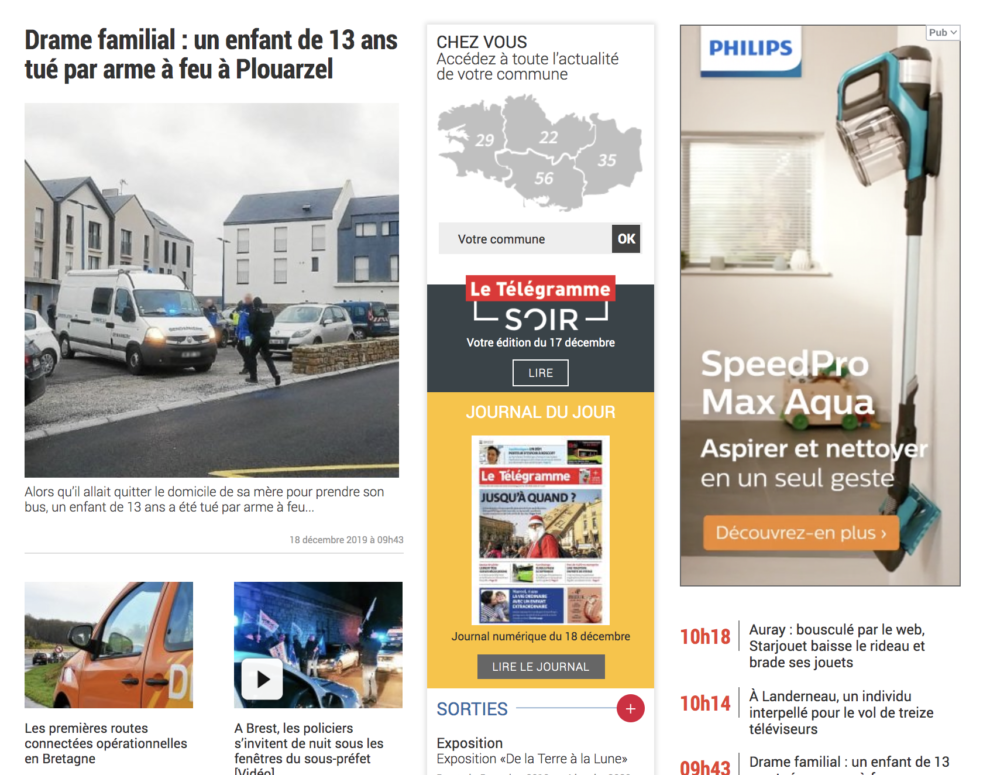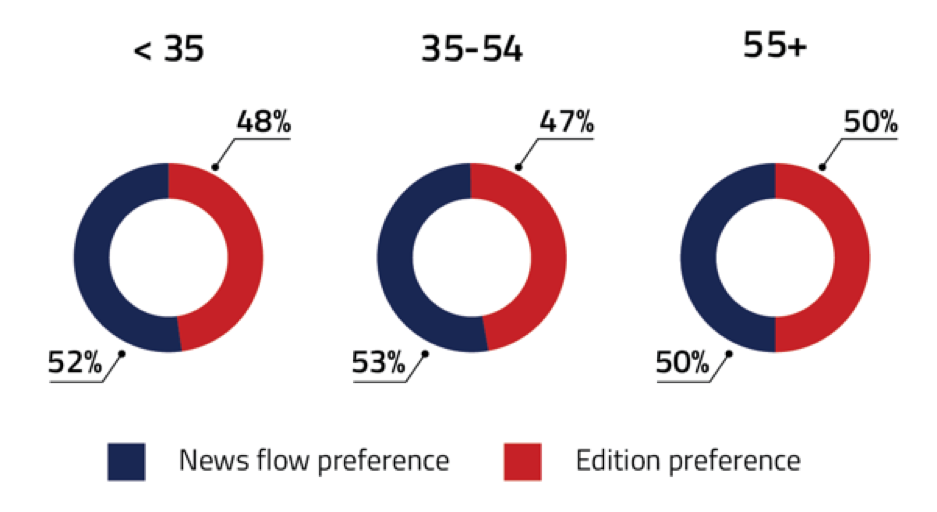In our discussions with publishers, we often notice higher standards applied to websites than ePapers. This is intriguing, knowing the level of reader engagement of the latter, and seeing steady yearly growth of ePapers in the past eight years. Publishers often tell us their ePaper readers are their most engaged and loyal readers, and on our own ePaper platform, we see average engagement times of 20-25 minutes — much more than publishers typically see on their websites. So why are the most loyal readers the ones that publishers invest the least in? Just because the product is replicating something from the ‘past’ (the print newspaper), doesn’t mean that the technology itself should be just as old.
Today we are sharing some of the biggest mistakes we have seen regarding ePapers over our eight years focusing on this technology. Get in touch if you think other mistakes belong on this list, or if you have questions on how to avoid these mistakes!
1. Lack of PDF quality
While most ePapers have what we call “article lightboxes“, where readers can click on an article to open it up full screen, the majority of reading is still done in pinch to zoom mode. Our research shows that only 25% of readers click on the article lightboxes. That means that ePapers without PDF quality are providing a poor user experience to the majority of their readers.
Is this story capturing your attention?
"(Required)" indicates required fields
2. Not using the ePaper apps to their full extent
While in the US we see a lot of publishers with just web versions of their ePapers, in Europe it’s often the opposite: there’s a focus primarily on native ePaper apps. In both of these cases, publishers miss out on a huge potential.
On the one hand, not distributing ePaper via native apps misses out on functionalities such as push notifications or offline reading. We know how important push notifications are for engaging readers, but sometimes publishers can forget this when it comes to their ePaper apps. Our research has found that engaging with your readers in the morning through a push notification increases reader activation by 15% throughout the day. ePapers are often read during the commute where networks are not always stable, so offline reading plays an important role.
Still, the web version plays a very important role in the overall ePaper reader journey. Many publishers have the goal of getting their readers to download their app and create a daily habit, as engagement levels are higher there. To achieve this, publishers should make use of the web version of their ePaper as an entry point. The web version has a much higher level of discoverability via social and the publisher’s website, and is a great source of potential subscribers.
3. No visibility on homepage
Sometimes it can almost feel like a puzzle to find the ePaper on a publisher’s website. A small bit of text somewhere might say “Today’s paper” or “Print newspaper”, but readers who haven’t experienced the ePaper before can easily skip over it. Instead we recommend highlighting your ePaper with an updated thumbnail of each day’s edition.


On our platform, Le Télégramme integrates the thumbnail into the middle of their homepage, while Le Monde does this on the top left corner.
4. Thinking the ePaper only serves an older audience
Another very common mistake we see is publishers thinking their ePaper can only serve an older audience. While for some publishers it may be true that their ePaper audience skews older currently, this might be due in part to the other mistakes publishers are making with their ePapers. Our research shows a huge untapped potential amongst younger readers: the group of readers under the age of 35 have a 48% preference for news in edition formats.

To engage this younger audience, publishers will need to invest in their digital edition product experiences. This can be done either through adding more mobile-optimised edition options or creating entirely new edition products for younger readers.
We have seen success from publishers adding our “NextGen” edition as an option in their existing replica edition products. This type of hybrid product where both the replica edition and the mobile-optimised version are housed in the same app means that publishers do not need to fear losing their existing readers, while they can use the new product to market to a new, younger audience.
5. Not focusing on speed
However, to truly reach a younger audience with their ePaper, publishers will need to focus on speed. For example, The Telegraph’s optimisation of their homepage speed (going from 9 seconds to load to 5.5 seconds), resulted in a 49% increase in subscription conversion and a 12% increase in pageviews from subscribers. Just as this year saw more publishers focused on improving the speed of their website, we hope next year more publishers will invest in fast ePaper platforms. This expectation of fast digital technology is only growing stronger with new generations. Millennials, born between 1981 – 1996, are sometimes called “digital migrants” because they can usually still remember a time before their whole life was digital. However Gen Z, born between 1997 – 2015, are true digital natives and therefore have no tolerance for inconvenient digital news experiences. If publishers cannot capture the attention of millennials, then there’s no hope for Gen Z readers who want almost zero lag. Nic Newman, senior researcher at the Reuters Institute, says this generation has “literally no patience”.
6. Viewing the ePaper as something only for subscribers
Many publishers have their ePapers entirely behind a paywall, often not even showing any type of content if the user is not logged in. This means it can be difficult to convert website readers into edition readers as there is a total lack of sampling. We think this is a missed opportunity to include the ePaper in acquisition strategies. For example on our platform we encourage the use of metered social sharing, so that when an article from the ePaper is shared on social, non-subscribers can still swipe left or right to additional articles in the edition before hitting the paywall.
Ouest-France even uses their digital-only evening edition, L’Edition du Soir, as a clear part of their acquisition strategy. Readers can access or download an edition and then only read a certain number of articles per month. This helps new readers to discover the value this edition provides, and in the first five years they were able to grow an entirely new audience of nearly 2 million monthly readers.
7. Lack of security
Finally, for publishers who do want to keep their ePaper content behind the paywall, it is surprising how many do have leaks. While we know some readers are constantly looking for new ways to thwart the paywall (made only easier by the release of new paywall-blocking tech this year), some other ePaper platforms are known for having easily shared links that allow for full access to the ePaper content. So we encourage publishers on such platforms to investigate if their exclusive content is actually kept exclusive.
8. Overlooking the ePaper in engagement metrics
Often publishers overlook their ePaper in their engagement metrics. This is one reason why we were challenged by a Belgian publisher to build the EngageReaders product. This product started initially as a research project in collaboration with the University of Leuven, aiming to better understand and map the specifics of ePaper analytics.
One example of this is a recent conversation with a publisher who’s north star metric is number of minutes spent engaging with content per month. However, they were not including the engagement metrics from their ePaper readers, as they had limited analytics on this product. With a goal of doubling their engaged minutes in 2020, this could achieve this on day one just by including the stats from their ePaper readers. Last year a study from the Pew Research Center in the US found that the average time spent per visit to a news website is just above 2 minutes. This is in stark contrast to the average of 20-25 minutes spent per visit on our ePaper platform. Without the relevant analytics, publishers can be blind to the huge potential their ePapers provide.
Did you find this story interesting?
"(Required)" indicates required fields
Other Blog Posts

Stay on top of the game
Join our community of industry leaders. Get insights, best practices, case studies, and access to our events.
"(Required)" indicates required fields

